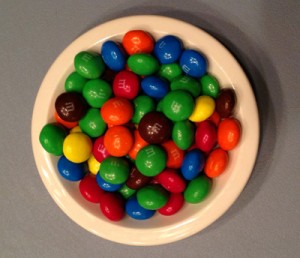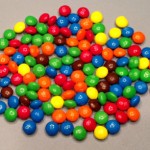Ems and Ens for Writers
Edith Hope Fine and Judith Pinkerton Josephson
 Every writer needs an occasional M&M’s® boost. But do you know your ems and ens? Every small tip makes you more a pro.
Every writer needs an occasional M&M’s® boost. But do you know your ems and ens? Every small tip makes you more a pro.
In days of yore, when some of us made the leap from typewriter keyboard to word processor, so primitive were the programs that after pulling a manuscript from our dot matrix printers, we had to underline any words to be shown in italics (titles and such) by using a ruler and pen. We’ve come far, fellow writers, since then.
But how about hyphen and dashes? Formerly, two typed hyphens (–) indicated a dash. Now, with simple commands, you can easily create typeset dashes. Once you’re aware of proper dashes, you see them everywhere. So let’s take a look at hyphens, en dashes, and em dashes.
Hyphens first; they’re straightforward. Use the shortest of the three symbols, the hyphen (-), in compound modifiers (high-flying stock), with some prefixes (smoke-free saloon), blended surnames (Smarmington-Poolworthy), and the names of compound numbers that fall between 21 and 99 (seventy-two). Splitting words at the end of a line is less of an issue with word processors than it was with typewriters, especially with ragged right margins where few words get divided at a line’s end. Be sure to turn off the automatic hyphenation, but use a simple hyphen if you do have to split a long word.
The en dash (–) is about the size of the letter N. For en dashes, think “n” for “number.” Use en dashes for the subtraction sign in math problems (89.4 – 16.3). Note the single space before and after the subtraction sign.
More uses of the en dash:
• with sets of times or dates.
8–10 pm March 2–March 21 WWI, 1914–1918
• with a range of numbers.
$49.99–$99.99 The Hunger Games, 64–65
• to show birth years for a living person.
Candy Carson (1993–)
• to link two-word modifiers.
San Francisco–San Diego flight
New Hampshire–Vermont border
• for temperatures.
36–40°C 98–110°F
Note that with every use except mathematics, no spaces appear before or after an en dash.
The em dash, often simply called “dash,” is about the size of an M.
Use em dashes . . .
• to show sudden breaks or abrupt changes.
“I’m almost out the door—wait, dropped my keys.”
• to show a side comment.
“Familiarity breeds contempt—and children,” Mark Twain once said.
• to explain or add information.
In Number the Stars, Lois Lowry wrote, “Surely that gift—the gift of human decency—is one that all countries hunger for.
• to show hesitation or stammering
“I can’t believe—” snapped Sherry, staring at the mess.
“Where’s m—m—my blankie,” stammered Enos.
• to show attributions
Whew! We have a winner here!
—George Aldrich, Rotten Sneaker Contest Judge
 Like the en dash, use no spaces before or after an em dash.
Like the en dash, use no spaces before or after an em dash.
Logophiles love knowing the ins and outs of hyphens, ems, and ens. But tyros and pros alike know they can always count on M&M’s® for inspiration and energy.
Are there any pesky punctuation marks that give you pause? Just ask and we will share our punctuation pointers!
Tags: dash, em dash, en dash, hyphen, punctuation

May 3rd, 2012 at 9:30 am
En dash, Em dash–two new vocabulary words for me! Or is that four new vocabulary words??
Anyway, thank you for sharing your expertise. I think I need to read your books!
May 4th, 2012 at 7:51 pm
Thanks for the helpful clarification! (Several years ago, when I was still teaching, I bought Nitty Gritty Grammar, and still have it for reference.)
May 5th, 2012 at 10:28 am
Dear Mom,
Definitely four! love your comments . . . (Ellipses. Coming soon . . .)
Edith
May 5th, 2012 at 10:32 am
Hi, Marilyn,
Yes, teachers love theNGG books.
And here’s a secret: WE still look things up in the Nitty-Gritty guides.
Edith
May 17th, 2012 at 2:28 am
em dash and en dash I learn something new daily!